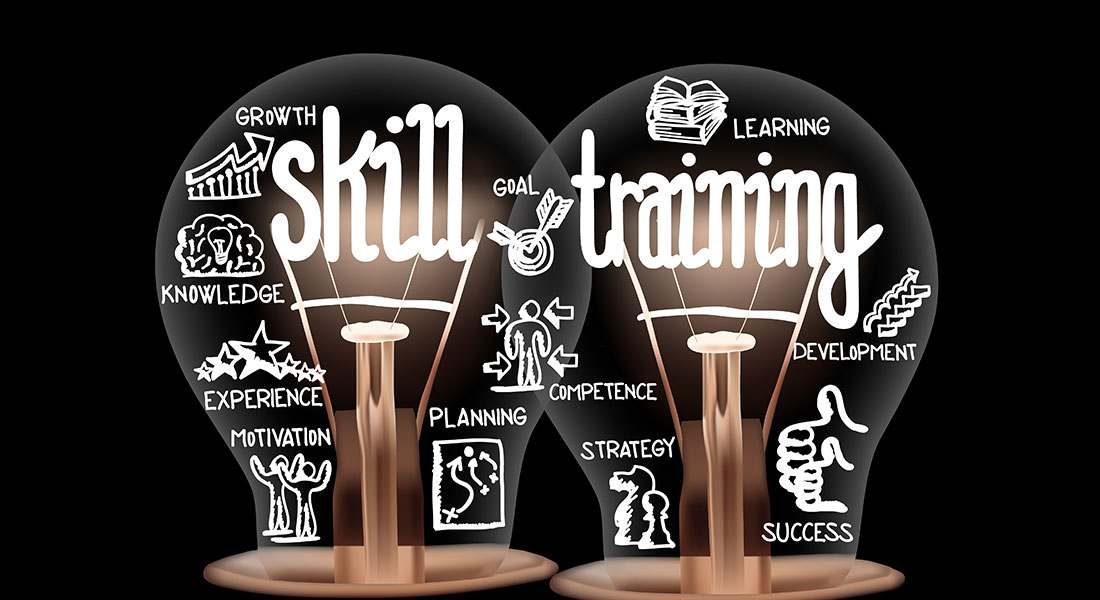Corporate Training Essentials: Enhancing Performance and Growth

In today's rapidly evolving business landscape, the ability to adapt, learn, and grow is not just a luxury—it's a necessity. Corporate training programs are the bedrock upon which successful companies build a skilled, engaged, and future-ready workforce. But what exactly makes up the foundation of effective corporate training? In this comprehensive blog post, we'll discuss the essential elements that make up a robust corporate training program. We'll explore why training is so crucial for both individual and organizational growth, the different types of training available, and the key factors to consider when designing and implementing a successful training initiative.
→ Subscribe to AI in Corporate Training Newsletter
Table of Contents
- What is Corporate Training?
- Why is Corporate Training Important in Modern Organizations?
- How Does Corporate Training Enhance Employee Performance?
- In What Ways Does Corporate Training Improve Employee Satisfaction and Retention?
- How Does Corporate Training Contribute to Organizational Growth and Competitiveness?
- How Can Corporate Training Help Organizations Adapt to Industry Changes?
- What Role Does Corporate Training Play in Building a Skilled Workforce?
- How Does Corporate Training Foster a Learning Culture?
What is Corporate Training?
At its core, corporate training is a strategic investment in human capital. It goes beyond simply imparting knowledge or skills; it's about fostering a culture of continuous learning and development. Effective training programs align with an organization's overall goals, equipping employees with the tools they need to excel in their roles and contribute to the company's success. Corporate training, in simple words, is a systematic approach to developing and enhancing the skills, knowledge, and competencies of employees within an organization.
Corporate training isn't just about ticking boxes or fulfilling compliance requirements. It's a strategic investment in human capital that yields tangible results. By equipping employees with the latest knowledge and skills, companies empower them to tackle challenges, innovate, and adapt to changing circumstances. It encompasses a wide range of learning activities and programs designed to improve individual and team performance, boost productivity, and ultimately drive business success.
Wish to Enhance Performance and Growth Through Corporate Training?
Here are a few ways it helps
- Targets skill development
- Improves problem-solving abilities
- Reduces turnover and absenteeism
- Fosters a culture of innovation
- Improves customer satisfaction
Reduces operational costs
Why is Corporate Training Important in Modern Organizations?
In the dynamic landscape of modern business, corporate training has emerged as a non-negotiable asset rather than a mere option. Organizations that prioritize and invest in comprehensive training programs are not only staying ahead of the curve but also reaping a multitude of benefits that directly impact their bottom line and overall success. Here's why corporate training is indispensable in today's world:
1. Navigating the Digital Transformation: The rapid advancement of technology has revolutionized how businesses operate. Corporate training equips employees with the digital fluency and technical skills necessary to leverage these technologies effectively, ensuring seamless integration into workflows and maximizing productivity. You can also try out digital adoption platforms to ensure a seamless digital transformation. Here are a few of their use cases -

2. Adapting to Evolving Markets: Markets are more volatile than ever before. Training empowers employees to be agile and responsive to change, whether it's a shift in consumer preferences, regulatory updates, or disruptive innovations. Adaptability is key to survival and growth.
3. Attracting and Retaining Top Talent: Today's workforce seeks more than just a paycheck; they crave opportunities for growth and development. Robust training programs signal to potential and current employees that a company is invested in their future, making it an attractive workplace and fostering loyalty.
4. Closing Skill Gaps: The work skills required for specific roles are constantly evolving. Training bridges the gap between existing skills and the competencies needed to excel in the modern workplace. This not only enhances individual performance but also strengthens the overall capabilities of the organization.
5. Fostering Innovation: A well-trained workforce is more likely to generate innovative ideas and solutions. By encouraging a culture of continuous learning, companies create an environment where creativity thrives and new approaches are embraced.
6. Enhancing Employee Engagement: Employees who feel valued and supported through training opportunities are more likely to be engaged in their work. This leads to increased job satisfaction, higher morale, and improved productivity. Here are a few strategies to enhance employee engagement.

7. Building a Stronger Brand: Organizations known for their commitment to employee development attract positive attention from both customers and potential employees. A reputation for nurturing talent translates into a stronger employer brand.
8. Mitigating Risk: Compliance training on industry regulations and standards helps organizations avoid costly legal issues and reputational damage. It ensures that employees are aware of their responsibilities and adhere to best practices.
9. Driving Performance and Productivity: The ultimate goal of corporate training is to enhance individual and team performance. When employees have the knowledge and skills to do their jobs effectively, productivity naturally increases, leading to improved outcomes and higher profits.
In the modern business landscape, corporate training is not a luxury but a strategic imperative. It's the catalyst that enables organizations to thrive amidst change, attract top talent, foster innovation, and ultimately achieve sustainable success.
How Does Corporate Training Enhance Employee Performance?
Corporate training is a catalyst for improved employee performance, acting as a bridge between potential and realized capabilities. It works on multiple levels to elevate individual and team productivity, leading to significant gains for the organization. Here's how training directly impacts performance:
1. Targeted Skill Development: Training programs are designed to address specific skill gaps that may hinder employees from reaching their full potential. By focusing on relevant skills, training ensures that employees have the exact tools they need to excel in their roles.
2. Knowledge Expansion: In today's fast-paced business environment, knowledge quickly becomes outdated. Corporate training provides employees with the latest industry insights, trends, and best practices, enabling them to make informed decisions and stay ahead of the curve.
3. Improved Problem-Solving Abilities: Many training programs incorporate problem-solving exercises and immersive simulations, giving employees the opportunity to develop critical thinking skills and apply them to real-world scenarios. This translates to better decision-making and a more proactive approach to challenges.
4. Boosted Confidence and Motivation: When employees acquire new skills and knowledge, their confidence naturally increases. This newfound confidence motivates them to take on more challenging tasks, contribute ideas, and take ownership of their work.
5. Enhanced Collaboration and Communication: Training often involves group activities and collaboration, fostering better communication and teamwork within the organization. This leads to smoother workflows, faster problem resolution, and a more cohesive work environment. Here are a few platforms to use for seamless business collaboration and communication.

6. Increased Efficiency and Productivity: Armed with the right skills and knowledge, employees can complete tasks more efficiently and accurately. This reduces errors, streamlines processes, and ultimately leads to higher productivity levels.
7. Reduced Turnover and Absenteeism: Employees who feel valued and supported through training opportunities are more likely to be engaged and satisfied with their jobs. This translates to lower turnover rates and reduced absenteeism, saving the company time and money.
8. Measurable Results: Effective training programs have clearly defined objectives and measurable outcomes. This allows organizations to track the impact of training on individual and team performance, ensuring that the investment is yielding tangible results. Here's a short video that explains Kirkpatrick’s model to evaluate the effectiveness of training programs.
In What Ways Does Corporate Training Improve Employee Satisfaction and Retention?
Corporate training plays a pivotal role in fostering a positive work environment that nurtures employee satisfaction and loyalty, ultimately leading to higher employee retention rates. Here's how training contributes to a happier and more engaged workforce:
1. Demonstrating Investment in Employees: When companies invest in training programs, it sends a powerful message to employees: "We value you and your growth." This show of commitment instills a sense of appreciation and loyalty, making employees more likely to stay with the organization.
2. Empowering Career Growth: Training opens doors to career advancement. Employees who gain new skills and knowledge become more valuable assets to the company, positioning them for promotions and greater responsibilities. This clear path to career growth fosters a sense of purpose and motivation. Here are a few skills that are currently in demand so growing these skills can be highly crucial for employees.

3. Enriching Job Roles: Training can expand the scope of an employee's role, introducing them to new challenges and responsibilities. This keeps the job fresh and exciting, preventing boredom and stagnation, which are common reasons for employee turnover.
4. Cultivating a Learning Culture: Organizations that prioritize training create a culture of continuous learning and development. This environment encourages employees to explore their interests, acquire new skills, and stay abreast of industry trends, leading to increased engagement and job satisfaction.
5. Building Confidence and Competence: As employees master new skills and knowledge, their confidence in their abilities grows. This increased competence leads to greater job satisfaction as employees feel more capable and empowered to take on challenges.
6. Improving Collaboration and Teamwork: Training often involves group activities and collaboration, fostering stronger relationships among colleagues. This sense of camaraderie and teamwork contributes to a positive work environment and a more supportive workplace culture.
7. Addressing Skill Gaps and Frustration: When employees lack the necessary skills to perform their jobs effectively, it can lead to frustration and dissatisfaction. Effective training addresses these skill gaps, equipping employees with the tools they need to succeed eventually boosting their confidence and morale.
8. Promoting Internal Mobility: Training programs can help employees discover new interests and talents within the organization. This may lead to internal transfers or promotions to different departments, providing employees with fresh challenges and career paths without having to leave the company.
The Rapid Training Energizer — Newsletter
Get Access to the Best:
- Resources
- Learning Events
- Offers
- And More!
How Does Corporate Training Contribute to Organizational Growth and Competitiveness?
Corporate training acts as a powerful engine for organizational growth, fueling innovation, adaptability, and a competitive edge in the market. It's not just about individual development; it's a strategic lever that propels the entire company forward. Here's how training contributes to a thriving and competitive organization:
1. Building a High-Performance Workforce: Training equips employees with the skills and knowledge to perform at their best. This leads to increased productivity, efficiency, and innovation across all departments. A high-performance workforce is the backbone of a successful organization. Here's a short video discussing how rapid eLearning development can help with enhanced employee performance.
2. Fostering a Culture of Innovation: Training programs encourage employees to think creatively, explore new ideas, and challenge the status quo. This fosters a culture of innovation where employees are empowered to contribute to the company's growth through their insights and initiatives.
3. Enhancing Adaptability to Change: In today's rapidly changing business landscape, adaptability is crucial. Training prepares employees to embrace change, whether it's adopting new technologies, responding to market shifts, or adjusting to evolving customer needs. This agility ensures the organization remains relevant and competitive.
4. Attracting and Retaining Top Talent: A strong training and development program is a magnet for top talent. High-performing individuals seek out companies that invest in their growth. By offering robust training opportunities, organizations can attract and retain the best and brightest, ensuring a continuous influx of new ideas and skills.
5. Improving Customer Satisfaction: Well-crafted customer service training ensures employees are better equipped to understand and meet customer needs. This translates to improved customer service, higher satisfaction rates, and increased customer loyalty. A satisfied customer base is essential for sustained growth.
6. Reducing Operational Costs: Training can help identify inefficiencies and bottlenecks in processes. By addressing these issues, organizations can streamline operations, reduce errors, and ultimately lower costs.
7. Staying Ahead of the Competition: The business world is a constant race. Companies that invest in training their employees are better positioned to stay ahead of the curve. They can adopt new technologies faster, respond to market changes more quickly, and continuously innovate, giving them a competitive edge. For example, AI is probably the most influential technology in the modern corporate training landscape. Here are a few ways AI helps with corporate training.

8. Building a Stronger Brand Reputation: Organizations known for their commitment to employee development and continuous improvement build a positive brand reputation. This can attract not only top talent but also new customers and investors.
How Can Corporate Training Help Organizations Adapt to Industry Changes?
Industries are in a perpetual state of flux, with new technologies, market trends, and regulations emerging at an unprecedented pace. Corporate training serves as a lifeline for organizations navigating these turbulent waters, empowering them to adapt, innovate, and thrive amidst change. Here's how training facilitates organizational adaptation:
1. Cultivating a Growth Mindset: A culture of continuous learning, fostered through training, instills a growth mindset within the organization. Employees become more open to new ideas, adaptable to change, and eager to acquire new skills. This mindset is essential for staying ahead of the curve in a dynamic industry.
2. Promoting a Proactive Approach: Rather than reacting to industry changes after they occur, training empowers organizations to anticipate trends and prepare for potential disruptions. This proactive approach allows companies to adapt more quickly and seize new opportunities. If you are curious to know the current industry trends, here’s a short video for you!
3. Identifying and Addressing Skill Gaps: Training needs assessments help organizations pinpoint skill gaps that may hinder their ability to adapt. By addressing these gaps through targeted training, companies ensure that their workforce possesses the competencies needed to navigate industry shifts.
4. Enhancing Change Management Capabilities: Change is often met with resistance. Training programs that focus on change management equip employees with the tools and strategies to embrace change, reducing resistance and ensuring a smoother transition to new ways of working.
5. Building Cross-Functional Expertise: Industry changes may require employees to work across different departments or functions. Training programs that promote cross-functional collaboration and knowledge sharing enable employees to understand the bigger picture and contribute more effectively to organizational adaptation. For example, most organizations today have a hybrid workforce and virtual instructor-led training(VILT) is really effective to foster seamless collaboration.
6. Staying Abreast of Regulatory Changes: Industries are often subject to regulatory changes that can impact operations and compliance. Training ensures that employees are up-to-date on the latest regulations, reducing the risk of non-compliance and associated penalties.
What Role Does Corporate Training Play in Building a Skilled Workforce?
Corporate training is the cornerstone of developing a skilled workforce that can drive innovation, productivity, and overall organizational success. It acts as a transformative force, shaping employees into highly capable individuals who are equipped to tackle the challenges of a dynamic business landscape. Training programs are designed to address specific skill gaps within the workforce. By identifying areas where employees need to improve, organizations can tailor training initiatives to provide the exact skills and knowledge required for success in their roles. Here's how training contributes to building a skilled workforce
1. Upskilling for the Future: The skills needed in the workplace are constantly evolving. Corporate training ensures that employees stay ahead of the curve by providing opportunities to learn new technologies, processes, and methodologies. Whether it's mastering artificial intelligence, data analytics, or automation, training ensures that the workforce remains relevant and capable of meeting the demands of a changing industry landscape. This continuous upskilling creates a workforce that is adaptable and future-ready.
2. Encouraging Continuous Learning: Training instills a culture of continuous learning within the organization. Employees are encouraged to embrace lifelong learning, seeking out new knowledge and skills to enhance their performance. This proactive approach to learning ensures that the workforce remains dynamic and capable of adapting to change.

3. Nurturing Talent from Within: Rather than relying solely on external recruitment, corporate training allows organizations to nurture and develop talent from within. By investing in the growth of their existing employees, companies can build a loyal and skilled workforce that understands the organization's culture and values.
4. Creating a Competitive Advantage: A highly skilled workforce is a key differentiator in today's competitive business environment. Companies with a well-trained workforce can innovate faster, respond to market changes more effectively, and deliver superior products and services, ultimately gaining a competitive edge.
5. Improving Employee Engagement and Retention: When employees see that their company is invested in their professional development, they are more likely to be engaged and motivated. This leads to higher job satisfaction and lower turnover rates, ensuring that the organization is successful in employee retention.
How Does Corporate Training Foster a Learning Culture?
Corporate training is a catalyst for creating a thriving learning culture within an organization, where continuous growth, knowledge sharing, and innovation are not just encouraged, but celebrated. Here's how training ignites and sustains a learning culture:
1. Setting the Tone from the Top: When leadership actively participates in and champions training programs, it signals to the entire workforce that learning is a priority. This top-down endorsement sets the tone for a culture where personal and professional development are valued.
2. Providing Diverse Learning Opportunities: A robust training program offers a variety of learning formats to cater to different learning styles and preferences. This could include workshops, custom eLearning modules, mentorship programs, conferences, or even lunch-and-learn sessions. A diverse range of options keeps learning engaging and accessible to everyone.
3. Encouraging Peer-to-Peer Learning: Training initiatives often involve group activities, collaborative projects, and knowledge-sharing sessions. This encourages employees to learn from each other, fostering a sense of community and creating a supportive environment for growth.
4. Rewarding Learning Achievements: Leveraging basic aspects of gamification such as recognizing and rewarding employees who actively participate in training and development programs reinforces the importance of learning. This could be through promotions, bonuses, public recognition, or even simple words of encouragement. Here’s a short video to help you understand how you can get started with gamification.
5. Integrating Learning into Daily Work: A learning culture goes beyond formal training sessions. It encourages employees to apply what they learn to their daily tasks, experiment with new approaches, and share their insights with colleagues. This creates a continuous feedback loop that reinforces learning and drives innovation.
6. Creating a Safe Space for Experimentation: A learning culture embraces mistakes as opportunities for growth. Employees are encouraged to try new things, take calculated risks, and learn from their failures. This psychological safety fosters creativity and encourages employees to step outside their comfort zones.
7. Promoting a Growth Mindset: Training programs that focus on developing a growth mindset help employees see challenges as opportunities for learning and development. This mindset shift empowers individuals to take ownership of their learning journey and embrace continuous improvement.
Wrapping Up!
Corporate training is far more than a series of workshops or online courses; it's the cornerstone of a thriving, adaptable, and future-ready organization. By building a strong foundation, understanding its essential role, and recognizing its myriad benefits, companies unlock the full potential of their workforce. As we've explored, corporate training empowers employees, fosters a learning culture, and enhances both individual and organizational performance. It equips businesses to navigate industry changes with confidence, attract top talent, and cultivate a competitive edge. But the journey doesn't end here.
Stay Tuned for Part II
In the next part of this series, we'll delve deeper into the practical aspects of corporate training. We'll explore different types of training programs, strategies for designing effective initiatives, and best practices for implementation. Whether you're a seasoned HR professional or a business leader seeking to optimize your training efforts, stay tuned for valuable insights and actionable tips that will elevate your corporate training game.
The future of work demands a continuous commitment to learning and development. Embrace corporate training as a strategic investment, and watch your organization flourish in the face of change and challenge. If you are looking forward to getting weekly insights about corporate training and how you can leverage AI to enhance it, here’s the perfect newsletter for it.





